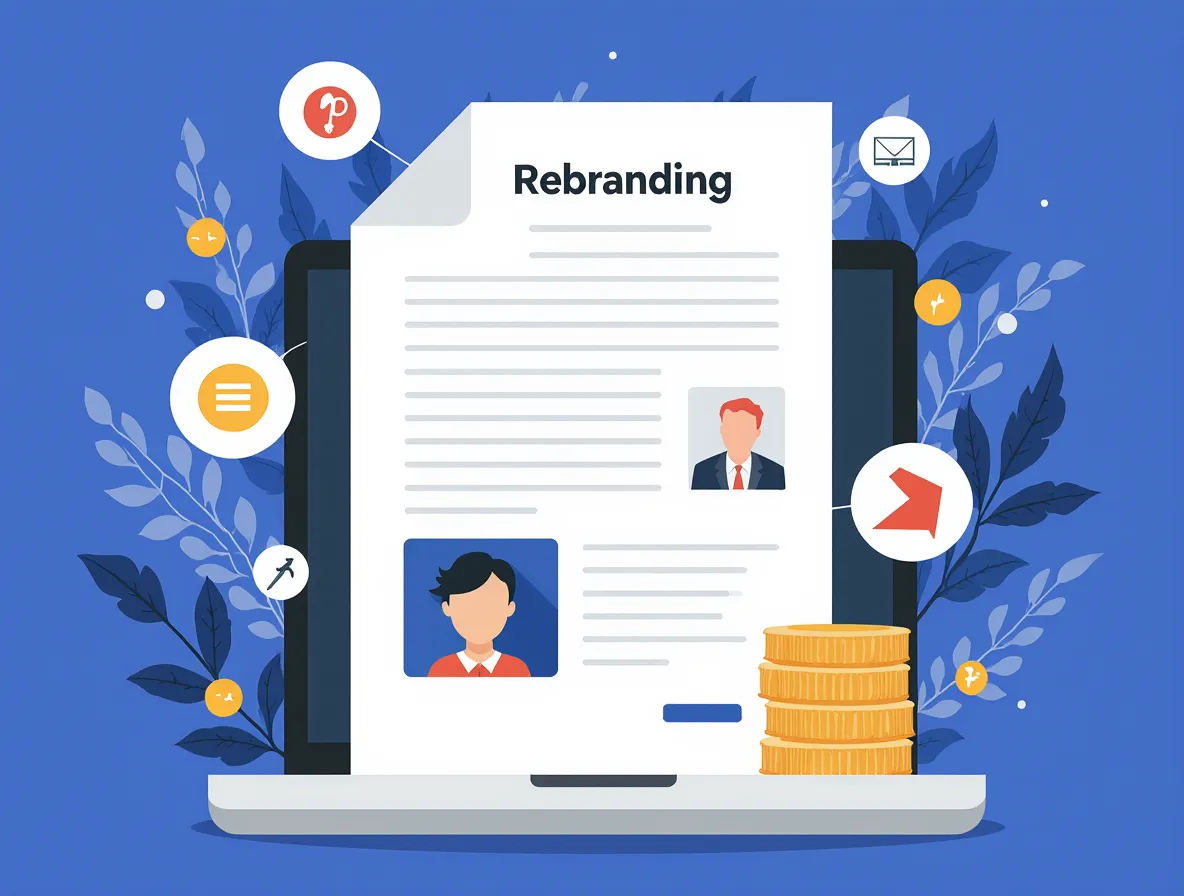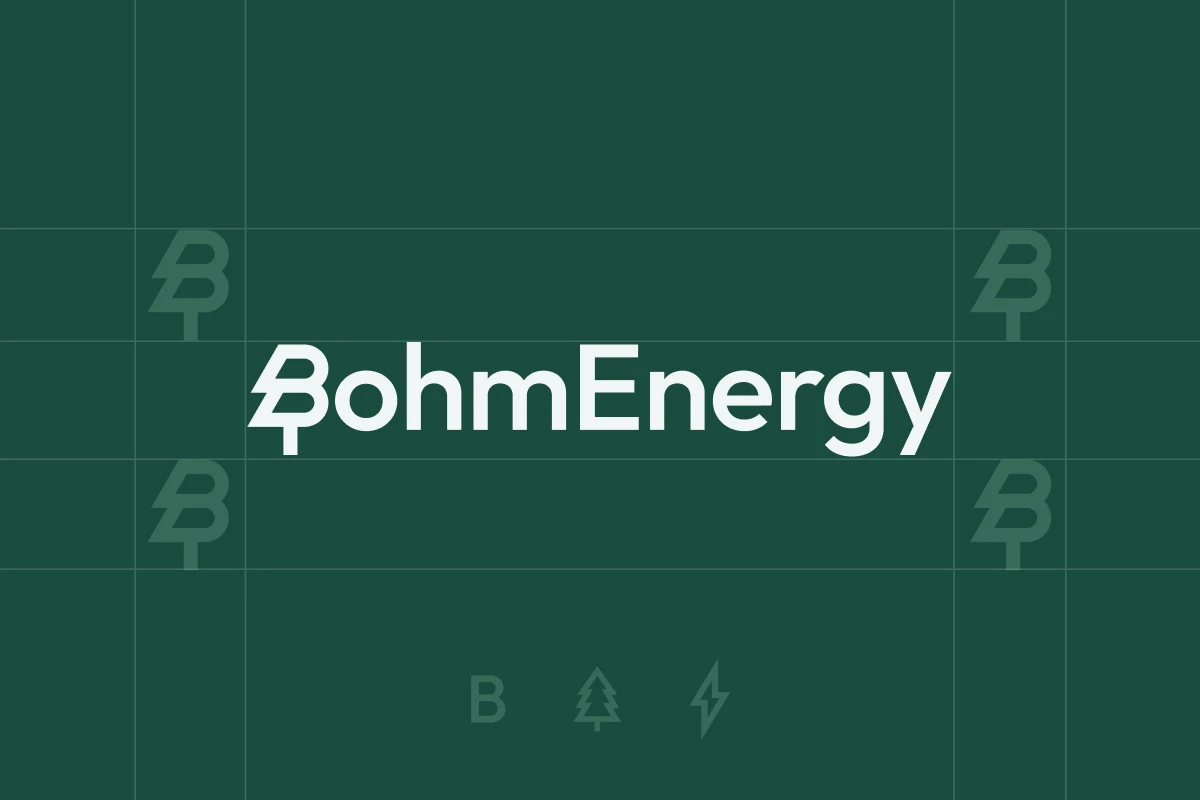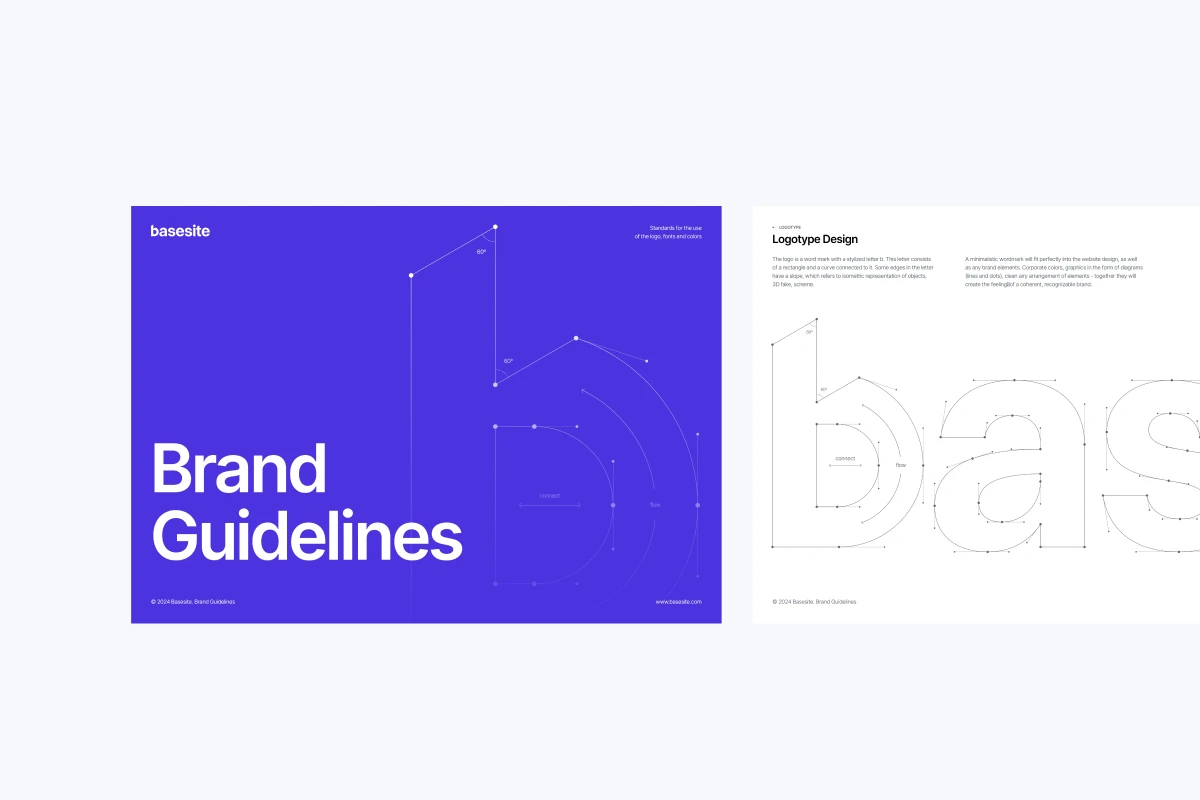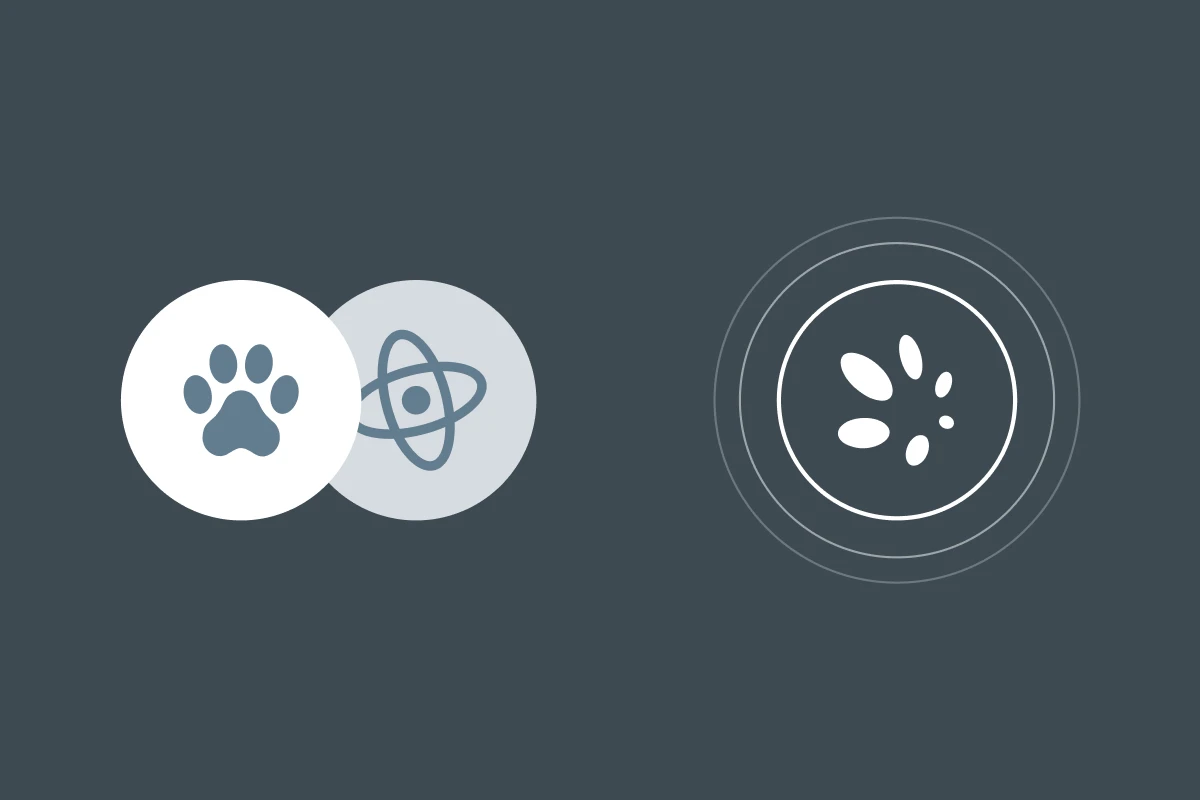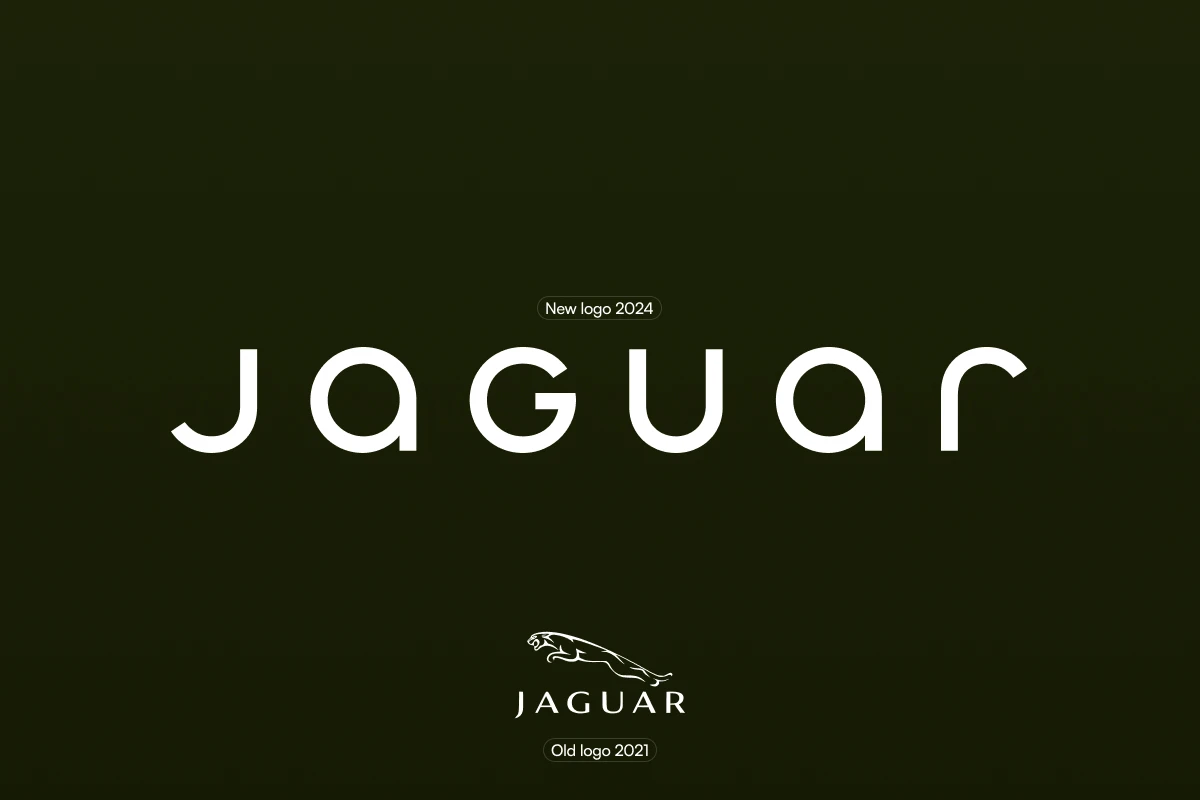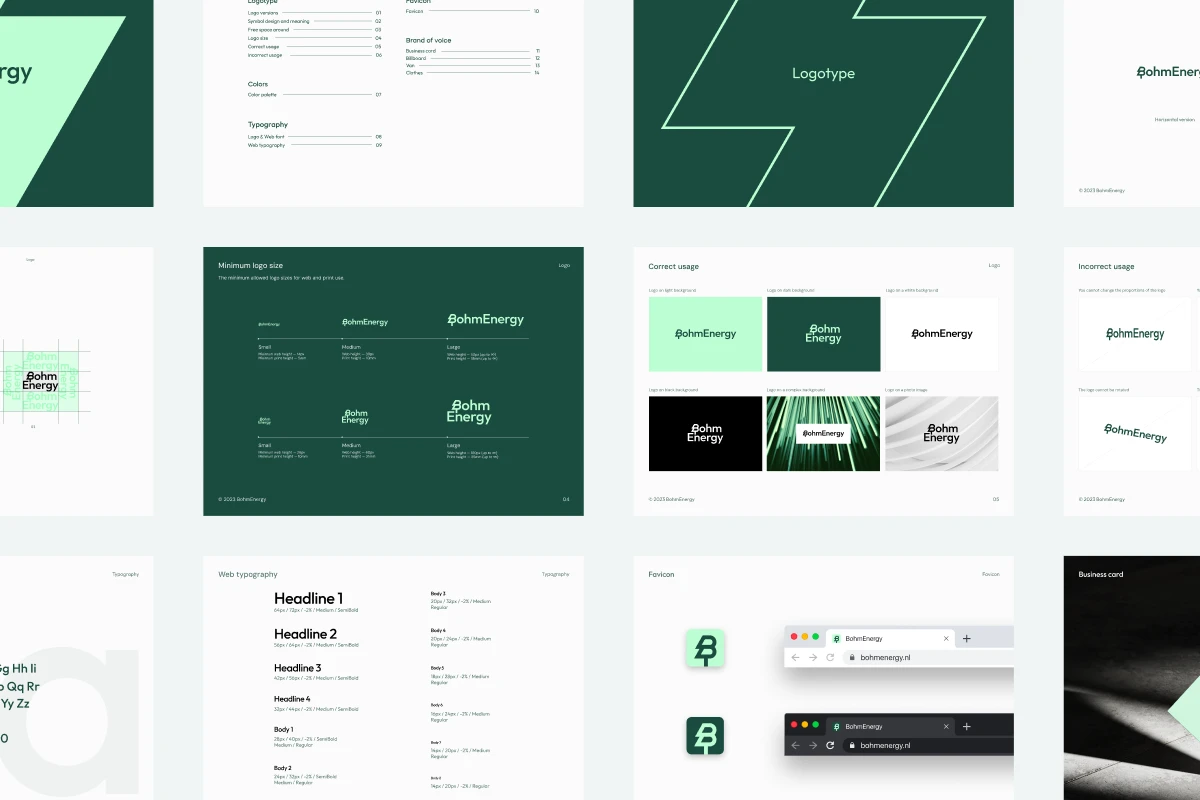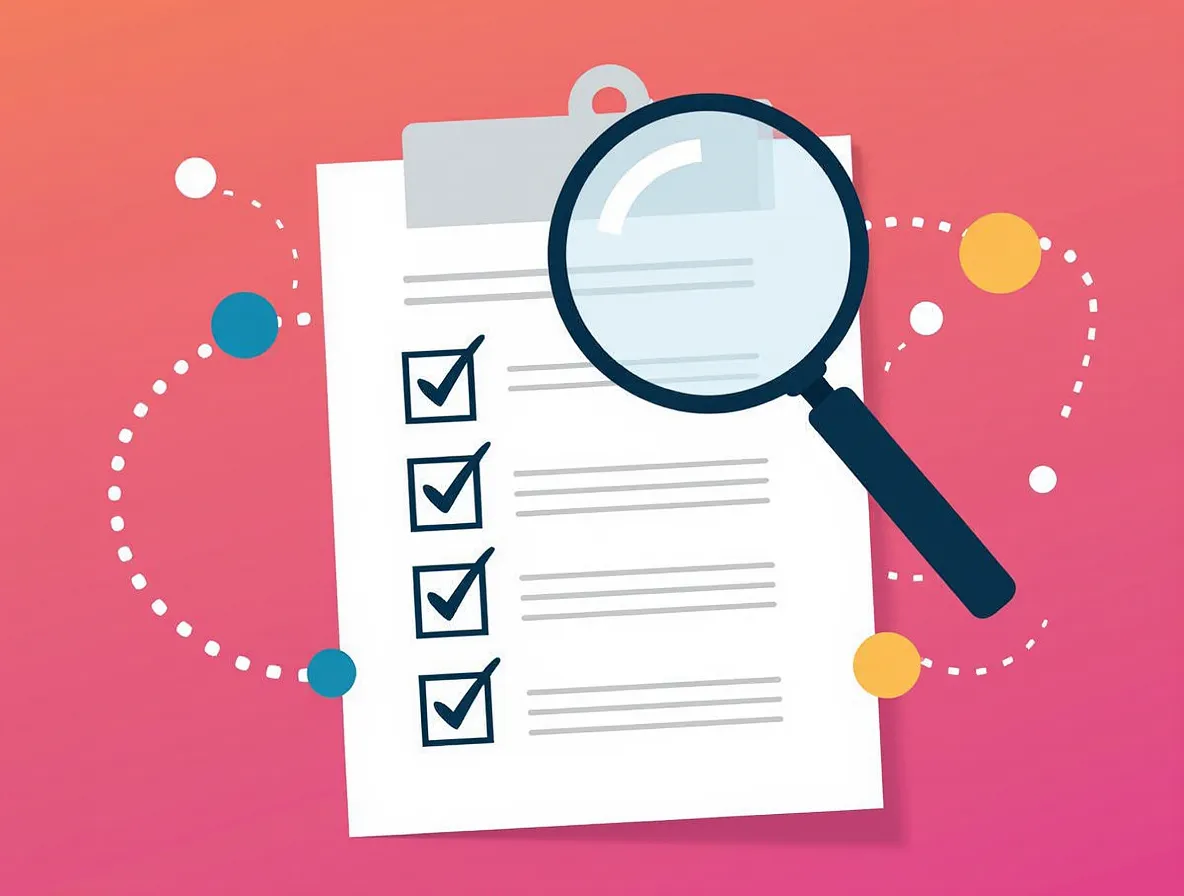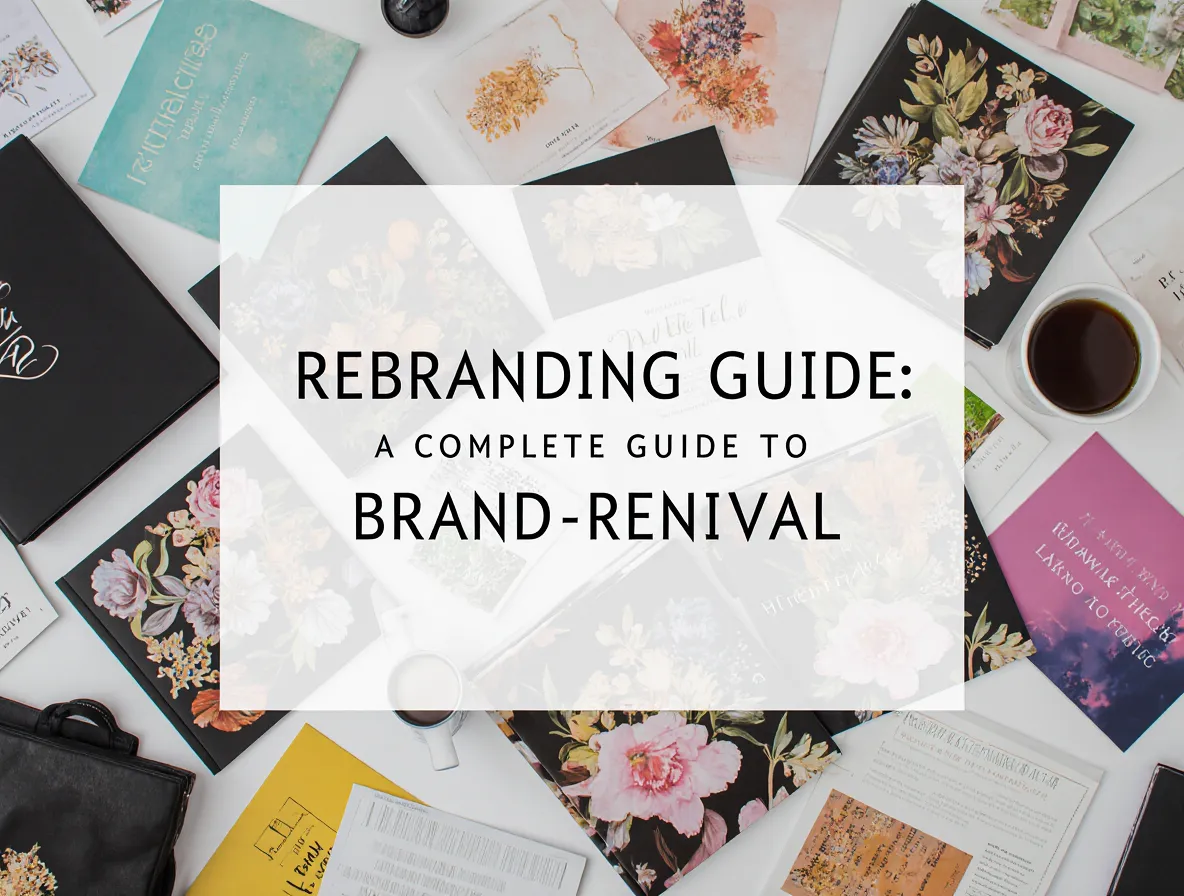Rebranding transforms struggling businesses into market leaders by strategically repositioning brand perception, messaging, and visual identity. Companies executing data-driven rebrands see average revenue increases of 20-30% within 18 months, while failed attempts waste 60-80% of invested resources.
Brand perception operates through cognitive shortcuts and emotional associations that traditional approaches often ignore. Understanding psychological mechanisms improves rebranding effectiveness by 40-60%.
- Cognitive Fluency Effect: Human brains process familiar elements 23% faster than unfamiliar ones, creating positive associations. Completely new brands must overcome cognitive friction before acceptance. Successful rebrands maintain 30-50% familiar elements while introducing strategic changes.
- Mere Exposure Effect: People develop preferences through repeated encounters. New brand elements require 12-20 exposures before positive association formation. This explains why phased rollouts outperform instant transformations by 35% in acceptance rates.
- Loss Aversion Principle: Customers perceive losing familiar brands as 2.5x more painful than gaining equivalent benefits. Frame rebranding as evolution rather than replacement. Emphasize continuity in core values while highlighting capability improvements.
- Social Proof Amplification: Early adopter reactions influence 60-70% of broader market acceptance. Identify brand advocates and ensure understanding before public launch. Their positive responses create social proof encouraging others to accept new branding.
- Anchoring Bias Impact: First impressions anchor all subsequent evaluations for 6-12 months. Launch execution quality determines long-term success probability. Poor launches require 3x more marketing investment to overcome negative anchoring.
Understanding these psychological principles is crucial, but implementing them effectively requires deep expertise and strategic thinking. At Celerart, we've helped over 150 companies navigate these cognitive complexities to achieve successful brand transformations that resonate with their target audiences. We can help you too, just contact our rebranding agency.
A complete rebranding is not always necessary—sometimes a targeted brand refresh is sufficient, which reduces risks and accelerates ROI.
When Does Your Brand Need a Fresh Start?
Rebranding addresses fundamental disconnects between current brand perception and business reality. Smart companies rebrand proactively during growth phases, not reactively during crises.
Market research reveals five critical rebranding triggers. Brand awareness drops below 15% in target demographics. Customer acquisition costs increase 40%+ year-over-year despite stable ad spend. Employee surveys show less than 60% can articulate company value propositions. Competitor analysis reveals 3+ direct rivals with stronger positioning. Revenue growth stagnates below 10% annually in expanding markets.
Market Position Assessment Framework
Timing analysis prevents costly mistakes. Avoid rebranding during Q4 holiday seasons in B2C markets. Technology companies should skip major release periods. B2B firms must consider industry conference calendars and budget cycles. Economic uncertainty periods require 50% larger marketing budgets for successful launches.
{{mike-quote-1}}
How Do You Define Success Before Starting?
Measurable success parameters prevent subjective decision-making and ensure ROI accountability. Define quantitative targets before creative development begins.
Brand awareness benchmarks establish baseline and growth targets. Conduct pre-launch surveys measuring aided recall (target: 40%+ in 12 months), unaided recall (target: 15%+ in 18 months), and brand attribute association (target: top-3 position for primary attribute). Track competitor awareness gaps requiring closure.
Financial KPIs connect brand investment to business outcomes. Set customer acquisition cost reduction targets of 15-25%. Define revenue growth expectations of 20-35% above historical trends. Establish premium pricing acceptance goals where applicable. Calculate customer lifetime value improvement benchmarks.
Successful rebranding requires an understanding of related processes — from digital marketing to customer experience. Here are some resources that will complement your business transformation strategy:
- Rebranding Guide: A Complete Guide to Brand Renewal
- Rebranding vs. Brand Refresh: How to Choose the Right Scale of Change
- How to Rebrand a Small Business: Complete Guide for Entrepreneurs
Digital performance indicators provide real-time feedback loops. Website organic traffic should increase 30-50% within 6 months. Social media engagement rates target 40-60% improvement. Branded search volume aims for 25-40% growth. Email marketing metrics expect 20-30% better performance.
Success Measurement Timeline:
- Month 1-3: Digital engagement, website metrics, social sentiment
- Month 4-6: Brand awareness surveys, customer feedback scores
- Month 7-12: Financial performance, market share analysis
- Month 13-18: Long-term customer behavior, competitive positioning
Strategic Planning: The Architecture of Successful Rebranding
Strategic foundation determines rebranding success more than creative execution. Companies investing 70% of budget in strategy and 30% in creative outperform reversed ratios by 3:1.
Audience research goes beyond demographics into psychographic profiling. Map customer journey touchpoints requiring consistent messaging. Analyze emotional triggers driving purchase decisions. Document communication preferences across generations and user segments. Identify influence networks affecting brand perception.
Competitive differentiation analysis reveals white space opportunities. Study 10+ direct and indirect competitors across positioning, messaging, visual identity, and customer experience. Identify over-served and under-served market segments. Map competitive messaging overlap to find unique positioning angles.
Message architecture development follows proven hierarchy structures:
- Core value proposition: Single sentence capturing unique customer benefit
- Supporting pillars: 3-4 proof points validating core promise
- Audience-specific messages: Customized versions for key segments
- Tactical applications: Channel-specific adaptations maintaining consistency
- Proof points database: Evidence supporting all message claims
Internal stakeholder alignment prevents execution breakdown. Leadership workshops ensure C-suite commitment and resource allocation. Department liaisons coordinate cross-functional implementation. Change management processes address employee resistance and confusion.
Brand Identity Development: Creating Visual and Verbal Distinction

Visual identity systems translate strategic positioning into memorable sensory experiences. Professional identity development costs $50,000-200,000 for mid-market companies but generates 5-10x ROI through improved recognition and pricing power.
Logo development starts with strategic requirements, not aesthetic preferences. Test logos across 20+ applications including business cards, billboards, mobile apps, and social media profiles. Ensure trademark clearance in primary markets plus expansion territories. Validate cultural appropriateness in target demographics.
Color psychology directly influences purchase behavior and brand recall.
- Blue increases trust perception by 15% in financial services.
- Red creates 6% urgency lift in retail environments.
- Green improves sustainability association by 25%.
- Purple suggests premium positioning, supporting 10-15% price premiums.
Test color combinations with target audiences using A/B preference studies.
Typography choices affect readability and brand personality perception. Custom fonts create uniqueness but require $15,000-40,000 investment plus ongoing licensing. Premium font libraries offer professional options at $200-500 annually. Ensure chosen typography works across digital screens, print materials, and signage applications.
Brand voice documentation eliminates inconsistent communication. Define vocabulary preferences, sentence structure patterns, and tone variations for different contexts. Create voice samples for social media, customer service, executive communications, and crisis management. Train content creators through workshops and style guide resources.
{{vad-quote-1}}
Implementation Excellence: Orchestrating the Rollout
Implementation complexity grows exponentially with touchpoint quantity and stakeholder diversity. Successful rollouts require project management rigor and change management expertise.
Phased rollout strategies reduce risk and enable course corrections.
- Phase covers digital assets: website, social profiles, email signatures, and digital advertising.
- Phase 2 includes marketing materials: brochures, presentations, trade show displays.
- Phase 3 addresses physical assets: signage, vehicle graphics, office environments.
Implementation Budget Allocation:
- Digital assets and website updates: 25-30%
- Marketing materials and communications: 20-25%
- Signage and physical applications: 15-20%
- Launch marketing and advertising: 20-25%
- Training and internal communications: 10-15%
External communication requires strategic messaging and timing coordination. Announce changes through email campaigns reaching existing customers. Social media campaigns target broader audiences with compelling narratives. Press releases generate earned media coverage. Customer service teams prepare FAQ responses addressing common concerns.
Quality control checkpoints prevent embarrassing mistakes. Review all materials for consistency before public release. Test website functionality across devices and browsers. Verify social media profile completeness and accuracy. Confirm physical signage installation meets brand standards.
Navigating Common Pitfalls: What Derails Rebranding Efforts?
Three devastating errors destroy rebranding value and waste substantial investments. Understanding these pitfalls protects companies from expensive mistakes.
Abandoning All Existing Brand Equity Without Strategic Justification
Companies frequently discard valuable brand recognition by changing everything simultaneously. This approach confuses loyal customers and requires rebuilding awareness from zero, destroying years of marketing investment.
- Why companies make this mistake: New leadership wants visible transformation proof. Creative agencies push dramatic concepts for portfolio impact. Internal teams assume customers want complete change without research validation.
- Price of this error: Established brands lose 40-60% recognition immediately after complete visual overhauls. Customer confusion creates 15-25% short-term sales decline. Rebuilding brand awareness requires 200-300% normal marketing spend for 18-24 months. Competitor brands capture confused customers during transition periods. Total cost: $500,000-2M+ for mid-market companies.
Insufficient Internal Stakeholder Buy-in and Training
External rebranding fails when internal teams cannot explain or support changes. Companies focusing exclusively on customer-facing elements while neglecting employee preparation create inconsistent brand experiences that damage credibility.
- Why this happens: Leadership assumes automatic employee adaptation to new branding. Training budgets get sacrificed for creative development funding. Compressed timelines skip internal preparation phases.
- Cost of misalignment: Customer service provides answers contradicting new positioning messages. Sales teams continue using outdated materials and value propositions. Employees express confusion or criticism about changes to customers. Mixed messages destroy trust and slow market acceptance. Recovery requires additional 6-month training cycles plus extended rollout timelines.
Catastrophic Budget Underestimation for Complete Implementation
Rebranding requires 3-5x larger investment than most companies initially budget. Organizations underestimating total costs compromise execution quality and abandon projects mid-stream, losing entire investments.
- Common underestimation: Budgeting only for logo design ($5,000-15,000) while ignoring website rebuilds ($25,000-100,000), signage replacement ($50,000-200,000), marketing launch ($100,000-500,000), and inventory disposal ($10,000-50,000).
- Financial consequences: Half-completed rebrands appear unprofessional and damage market perception. Extended 18-month rollouts confuse audiences and waste early investments. Insufficient marketing support prevents new brand awareness building. Companies abandon rebranding mid-process, creating market confusion while losing 100% investment.
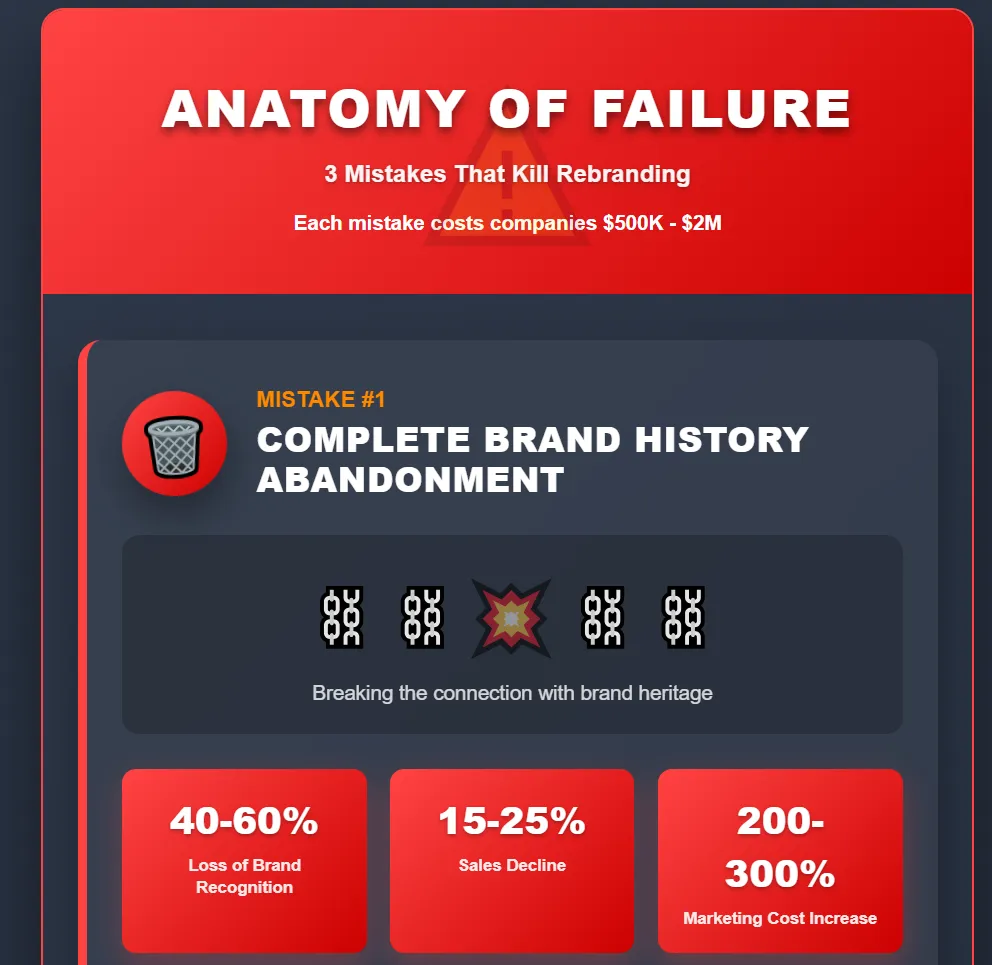
These costly mistakes highlight why professional guidance is essential for rebranding success—the stakes are simply too high to risk a DIY approach. Celerart's rebranding specialists have developed proven frameworks that help companies avoid these pitfalls while maximizing their brand transformation ROI. More details – https://celerart.com/services/brand-identity/rebranding.
Measuring Impact: How Do You Know It's Working?
Comprehensive measurement systems capture immediate responses and long-term brand health evolution. Effective tracking combines quantitative metrics with qualitative insights for complete performance understanding.
Short-term indicators emerge within 30-90 days post-launch. Website traffic increases of 25-40% suggest improved interest. Social media mentions volume growth of 50-100% indicates market awareness. Customer service inquiry patterns reveal confusion levels requiring management attention. Email engagement improvements of 15-25% show message resonance.
Medium-term metrics develop over 6-12 months. Brand awareness surveys track recognition improvement trends targeting 30-50% growth. Customer acquisition costs should decrease 15-25% as efficiency improves. Sales conversion rates indicate message effectiveness through 20-35% improvement. Customer retention rates demonstrate loyalty impact.
Comprehensive Brand Health Dashboard:
- Aided brand awareness (target: 40%+ improvement)
- Unaided brand awareness (target: 60%+ improvement)
- Brand attribute association strength (target: top-3 position)
- Purchase consideration rates (target: 25%+ increase)
- Net Promoter Score changes (target: 10+ point improvement)
- Share of voice versus competitors (target: proportional to market share)
- Digital engagement rates (target: 40%+ improvement)
- Revenue attribution to rebranding efforts
Long-term success evaluation requires 18-24 months for complete assessment. Market share changes indicate competitive position improvement. Premium pricing acceptance demonstrates brand strength increases. Customer lifetime value improvements show relationship deepening. Employee Net Promoter Scores reveal internal alignment success.
{{vad-quote-2}}
Building Long-term Brand Equity Through Strategic Evolution
Strategic rebranding creates the foundation for sustained competitive advantage rather than temporary improvement. Successful brands evolve continuously while maintaining core equity and customer recognition.
Brand architecture must accommodate future growth scenarios and market evolution. Design modular identity systems flexible enough for new product launches and geographic expansion. Develop messaging frameworks adaptable to changing customer needs and competitive landscapes. Create visual standards allowing innovation within consistent brand expression guidelines.
Continuous monitoring prevents gradual drift from strategic positioning. Quarterly customer research tracks perception changes requiring attention. Semi-annual competitive analysis identifies emerging differentiation threats. Annual internal brand audits ensure consistent expression across all touchpoints and communications.
Innovation integration maintains relevance without compromising equity. Test new elements with 10-15% of the audience before broader implementation. Document successful additions to brand standards for future consistency. Retire outdated elements systematically rather than through major overhauls.
{{mike-quote-2}}
Strategic rebranding delivers transformative business results when executed with disciplined planning, sufficient resources, and continuous optimization. Companies following structured methodologies while avoiding common pitfalls build brands capable of commanding premium pricing, attracting top talent, and creating customer loyalty that reduces marketing costs permanently. Success requires balancing strategic thinking with flawless execution across all stakeholder groups and market touchpoints.






